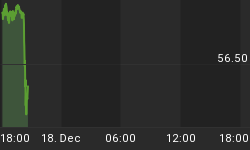Who could have ever imagined that North America would surpass Saudi Arabia as the world's largest producer of oil and natural gas liquids? A decade ago, that would have seemed laughable.
Yet that's exactly what has happened; and it's not just Saudi Arabia that has been left in North America's dust -- Russia has, too.
The surge in North American oil and gas production is arguably the most important development in energy over the last decade. That's the good news. The not so good news is that North America doesn't have nearly enough oil and gas pipelines to accommodate its 11-million-barrel-a-day output level.
The famously unresolved proposed Keystone XL pipeline would carry oil from Canada to the U.S. Gulf Coast, but its future is in legal and political limbo. The controversial Northern Gateway pipeline, proposed as an alternative to Keystone XL, would connect Canada's oil sands to the Pacific Coast, allowing greater volumes of oil to be shipped to Asia, but it, too, is still on the drawing board.
Both are good examples of how pipelines - considered the safest way to move oil and gas - have become politicized and scrutinized, and not without reason. Despite their reliability, pipelines still lead to an unacceptable rate of safety mishaps. They corrode and rupture, which threatens workers and nearby communities. In 2013 alone, over 119,000 barrels of oil were spilled in 623 incidents.
America's existing pipelines are getting older and more prone to corrosion, and over the next five to 10 years, there will be a significant increase in the number of new pipelines.
And that is creating a huge opportunity for better pipeline safety technology.
Monitoring and detecting corrosion in pipelines is still a crude affair (no pun intended). Pipeline companies tend to underspend on safety, concerned only with meeting the minimum regulatory requirements.
One of the major ways pipeline operators detect corrosion is with a "pig," a machine that travels down the inside of a pipeline looking for problems.
Pigs are not new -- the industry has long relied heavily on them--and the newest generation of pigs, known as "smart pigs," is considered an improvement over the pigs of yesterday. Smart pigs give a read on the state of the pipeline, such as cracks, corrosion, and metal loss. Operators receive this information in a control room and can then dispatch crews to fix the problem. As of 2012, 93 percent of pipeline inspections were conducted using smart pigs.
But smart pigs might not be enough. Enbridge (NYSE: ENB), a major Canadian pipeline company, has spent over $4.4 billion to upgrade pipeline safety. It is spending big bucks after one of its pipelines spilled oil into the Kalamazoo River in 2010 - a corrosion breach that Enbridge's smart pigs failed to detect ahead of time.
And that's the problem: despite recent advances, smart pigs aren't terribly accurate. They also require pipeline operations to shut down (you can't pump oil through a pipeline if there is a machine in the way), and analyzing the data smart pigs gather can take some time. The Wall Street Journal ran an article last year that talked about the pitfalls of smart pigs, even as pipeline companies continue to depend heavily on them.
So alternative methods to detect trouble spots are needed. One method for detecting corrosion uses a device from outside the pipeline. A series of sensors placed on the outside of the pipeline can search for corrosion without interfering in operations.
Pipeline safety company Fox-Tek, a subsidiary of Augusta Industries (CVE: AAO), uses such a system to detect corrosion, as well as a fiber optic system to detect bends, strains and stress in pipelines.
But the real innovation in Fox-Tek's system is its data analytics package. Companies that use smart pigs usually need to spend months doing post-inspection analysis, but Fox-Tek has developed proprietary software that does continuous and automatic analysis.
Fox-Tek's sensors gather information and automatically send back confidential reports on everything the company needs to know - temperature, pressure, strain, rates of corrosion, etc. in the form of handy graphs, charts and diagrams. It eliminates the need for an army of people to go out and inspect pipelines and then come back to do the analysis.
The pipeline safety market is massive and growing, but one of the major hurdles for new technologies like advanced sensors and software will be reluctance by pipeline companies to proactively invest in corrosion management and maintenance. In the past, they have largely focused on the bare minimum and viewed safety as a regulatory requirement.
However, there seems to be a sea change in the pipeline industry, particularly since operators are running into an environmental backlash. The blocking of several high-profile pipelines may have finally gotten the attention of the industry. Bringing local communities onboard and acquiring permits from regulators will require pipeline operators to demonstrate improved safety throughout their networks.
But above all, pipeline companies will see dollars saved by using cost-effective monitoring systems to reduce pipeline leaks. Enbridge has been forced to spend around $1 billion to clean up its mess in the Kalamazoo River, which was the result of a corrosion breach. It could spend a fraction of that to have better information on pipeline corrosion to prevent a growing problem from getting worse. That could reduce the frequency of future pipeline spills.
This could be a game changer in terms of how oil and gas pipelines are viewed in North America. If operators use smart software to catch small problems before they can turn into big ones, the common view of pipelines as accidents waiting to happen could be erased. Instead of seeing them as an environmental risk, the public may grow to see them as just another piece of modern infrastructure that facilitates commerce.
By. James Stafford of Oilprice.com
















